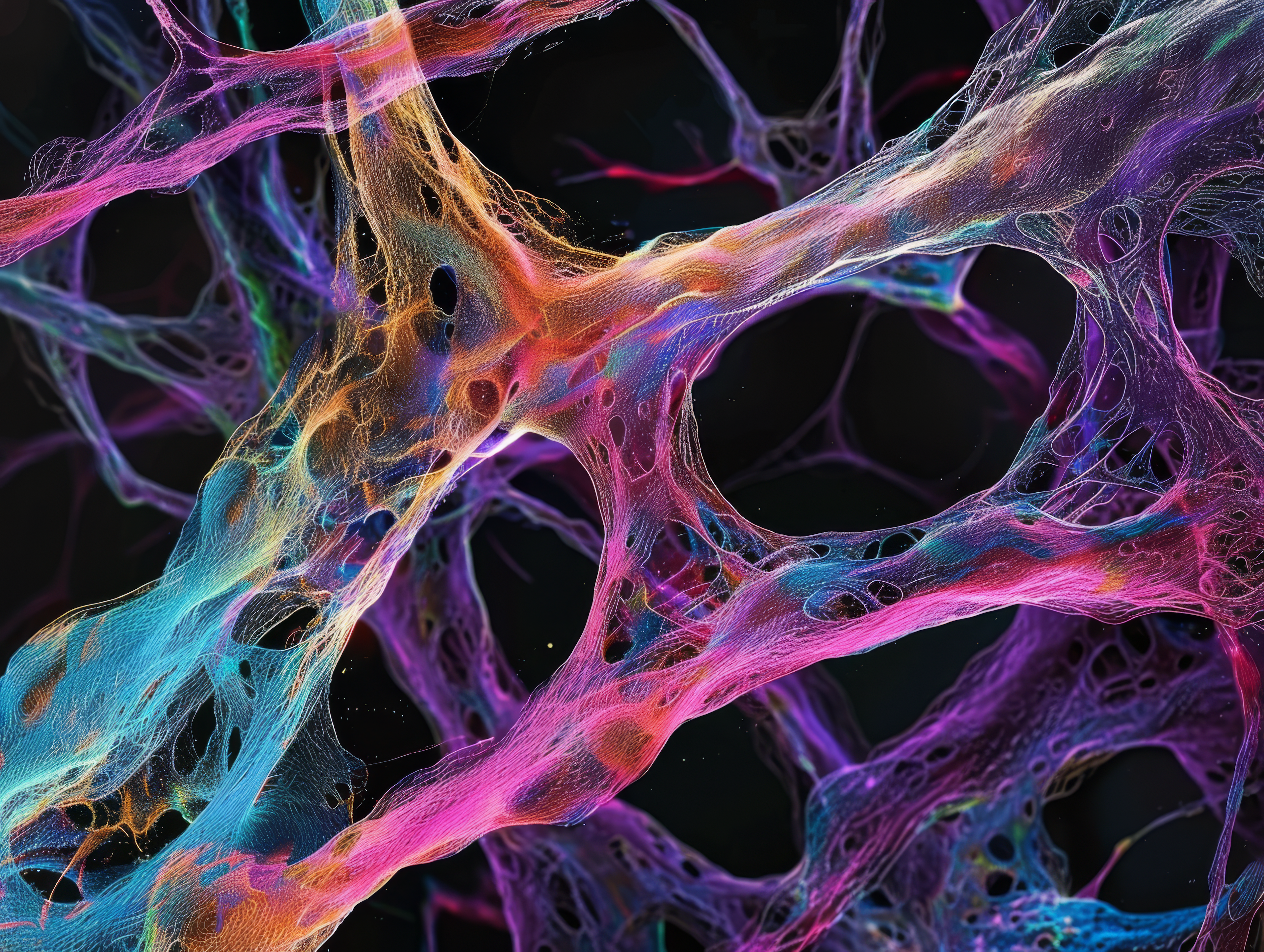What causes hyperpigmentation, dark spots, and uneven skin?
Troels Marstrand, Ph.D.
February 25, 2024


Hyperpigmentation
Dark spots and hyperpigmentation are complex issues with multiple root causes and biological systems involved. That is why it has been so hard to treat historically. Because of its importance and complexity we are going to break this up into several posts starting with an overview of biology of melanin and pigmentation.
Let’s take it from the top -
Our body creates melanin, or pigment, to protect our skin and cells from UV damage. The color we see in our skin, hair, and eyes, comes from melanin. Pigmentation is created in the deeper layers of skin and, through natural skin turnover, makes its way to the surface and is eventually ‘shed’ as the dead skin cells are replaced.
The pigment production process, melanogenesis, is an ongoing cycle of production and loss / removal. It is a fragile balance that can be upset by multiple stressors. Too much production and you have dark spots, hyper pigmentation and discoloration, too little production and you have uneven skin tone if mild, or things like vitiligo if more extreme.
While melanin production, and issues like hyperpigmentation, is complex involving receptors, pathways, and DNA transcription, we can break it down into three main activities:
Triggers - Factors that cause accelerated melanin production process to start
Melanogenesis - The signaling and production of melanin within the cells
Transportation - Transporting the newly produced melanin into skin and to the surface
Triggers of Melanin Production
Our skin has multiple receptors receiving internal and external information that our body reacts to. The three key factors stimulating melanin production are:
UV exposure: With UV-exposure the body’s natural protection system kicks in. Through a factor called alpha-MSH and in some cased directly, the body signals to the melanocytes to produce melanin.
Pollution: Molecules like PM2.5 a hydrocarbon, from car emissions, activate the AhR (aryl hydrocarbon receptor) pathway, leading to an increased melanin production.
Inflammation - In inflammatory responses like PIH, the inflammation in cells triggers the release of specific signaling proteins like cytokines and reactive oxygen species that overstimulate melanocytes and melanin production. This results in the PIH we see around breakouts and other injuries. Inflammation can come from things like acne and breakouts, injuries, stress, and immune responses
Our reaction to external triggers often increases with age. Meaning, over time our skin responds with more melanin production when triggered by things like acne or UV damage. It is thought that, as we age, our melanocytes have an enhanced functional activity after years of cumulative UV exposure. That increased activity combined with the higher number of senescent cells in the body, which create a low chronic inflammation, our system is primed for greater reactivity.
All important reasons to proactively manage UV exposure and inflammation.
How is Melanin Produced - Melanogenesis
Melanogenesis is the process of melanin production within our skin. This process gives our skin our unique coloration and creates photoprotection from UV damage. It takes place deep inside skin and involves specialized cells called melanocytes. These cells are responsible for receiving and reacting to different melanin triggering signals and producing the two types of melanin: pheomelanin and eumelanin. The balance between these types dictates your skin color.
Melanogenesis begins with one or more triggers. Those triggers activate specific pathways that flow into the central regulator of melanin production, called MITF. You could think of this as a room with multiple light switches that relay a signal, along different wires, to turn the lights on or off in the room.
Once MITF is triggered to ‘turn on’, it orchestrates the production of melanin by controlling the specific genes involved in melanin production. This involves specialized enzymes, named tyrosinases, which take the amino acid tyrosine and via a series of steps convert it into either of the two melanin types. Inhibiting tyrosinases therefore limits the amount of melanin produced, and is an active area of ingredient research and innovation.
While both types of melanin are produced by triggering of MITF and subsequent involvement of tyrosinases, it is the specific branching in the cellular pathways that determines how much of each pigment type is produced.
Transportation
Once the melanin is produced it is loaded into small carriers called melanosomes. These small vesicles are then actively transferred from the melanocytes into the surrounding skin cells (keratinocytes) where the pigmentation then becomes visible.
Over time these keratinocytes move toward the surface, form the outer layer of skin, and are then shed with cellular turnover. This is why PIH, or other dark spots, can fade over time as that pigment moves from the deeper layers to the surface and ultimately is replaced by new cells.
How to Prevent, Target, and Treat Hyperpigmentation
To holistically target unwanted pigmentation and dark spots it is important to address the three major parts of the melanin production:
Reduce the triggers of the signaling pathways. While not all triggers are within our control there are specific steps we can take to reduce and prevent triggering.
Consistent use of SPF and reducing UV exposure.
Use of topical and dietary antioxidants that help heal oxidative damage from UV and to protect cells against future damage
Protection and repair of the skin barrier:
Reduce inflammation with ingredients like: Bisabolol, Asparagopsis Armata Extract, Hydrolyzed Algin, Niacinamide, Palmitoyl Tetrapeptide-7
Stop the production
For almost 40 years, the main target has been the inhibition of tyrosinases. Particular using hydroquinone. However, hydroquinone does not have the best side effect profile and can lead to permanent loss of melanocytes because of its oxidative damage of membrane lipids leading to irreversible loss of inherited skin color.
Hydroquinone Alternatives
Today, many effective alternatives exist with identical modes of action: azelaic acid, licorice (glabridin), diglucosyl gallic acid and many others. A recent survey of bioactive tyrosinase inhibitors found dozens of alternatives with strong inhibitory binding, here the binding of glabridin (from licorice) to tyrosinase was shown to be 16 times that of hydroquinone. While this does not translate one-to-one in terms of clinical efficacy, there are potent options with limited side effect profiles.
Tranexamic acid has been shown to be very beneficial and multiple clinical studies have shown it to be equivalent to that of hydroquinone. It uses a different mode of action that inhibits plasmin, which is both involved in triggering melanin production signaling molecules, signaling the melanocyte, and in releasing inflammatory markers.
Prevent Transportation of Melanin to Skin
Hyperpigmentation can be reduced or prevented by preventing the transportation of the melanin into the skin cells, or keratinocytes.
Ingredients like Niacinamide, have been shown to have this effect. Studies comparing niacinamide with hydroquinone show comparable results (44% vs 55% improvement respectively), again with a much better safety profile. The study also found niacinamide’s effect to be in part due to its anti-inflammatory capacity.
Overall, hyperpigmentation and dark spots is a complex problem and the body has an amazing set of redundant systems that ‘work around’ many singular fixes. Effective treatment for hyperpigmentation should address it holistically and from cell to surface.
References
Serre, C., V. Busuttil, and J‐M. Botto. "Intrinsic and extrinsic regulation of human skin melanogenesis and pigmentation." International journal of cosmetic science 40.4 (2018): 328-347.
Videira, Inês Ferreira dos Santos, Daniel Filipe Lima Moura, and Sofia Magina. "Mechanisms regulating melanogenesis." Anais brasileiros de dermatologia 88 (2013): 76-83.
Gillbro, J. M., and M. J. Olsson. "The melanogenesis and mechanisms of skin‐lightening agents–existing and new approaches." International journal of cosmetic science 33.3 (2011): 210-221.
D’Mello, Stacey AN, et al. "Signaling pathways in melanogenesis." International journal of molecular sciences 17.7 (2016): 1144.
Navarrete-Solís, Josefina, et al. "A double-blind, randomized clinical trial of niacinamide 4% versus hydroquinone 4% in the treatment of melasma." Dermatology research and practice 2011 (2011).


